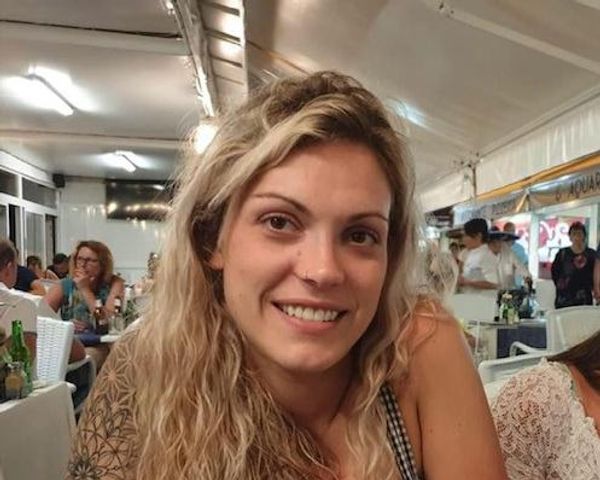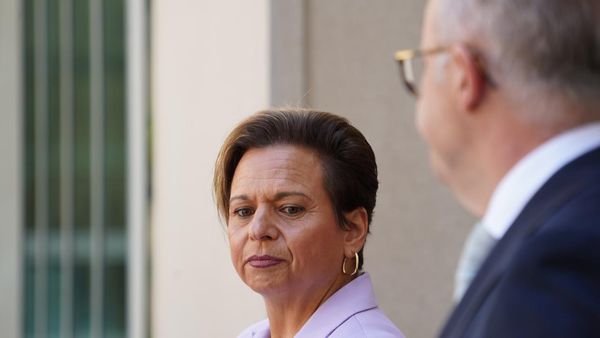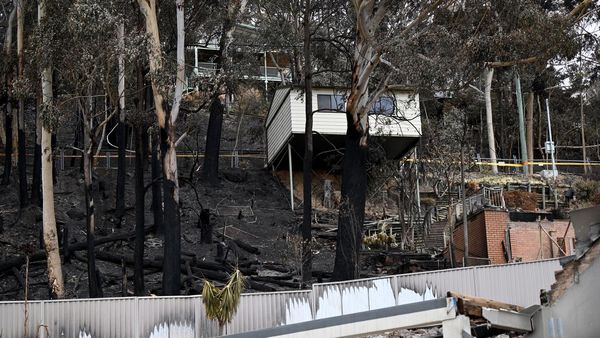
The weapons manufacturer Saab was “directly linked” to a human rights violation when a missile it produced was found in an Indigenous heritage area, an investigation for the Organisation for Economic Cooperation and Development has found.
The four-year investigation could lead to more companies being held accountable for how their weapons are used by clients, according to human rights lawyers involved in the case.
The 1.3-metre Saab RBS-70 anti-aircraft missile was discovered in January 2021 by traditional owners Andrew and Robert Starkey near Lake Hart, in remote South Australia. It was found in a section of the heritage site that overlaps with the defence force’s missile testing range near Woomera, which is one of the largest in the world. An exclusion zone for the range covers 122,000 sq km, roughly the size of England.
The location of the missile was also in close proximity to several culturally significant artefacts for the Kokatha people, including rock art.
The Starkey brothers told Defence about the missile in May 2021. When it had not been removed by September, they contacted Saab and lodged a complaint with the OECD, which can investigate whether multinational companies have breached human rights obligations.
Saab immediately contacted Defence but the missile remained uncleared until January 2022 – a year after it was discovered. It may have been sold to Australia between the mid-1980s and early 1990s, the investigation suggested.
The complaint, investigated by the Australian National Contact Point for the OECD Guidelines for Multinational Enterprises (AusNCP), alleged that Saab did not undertake adequate due diligence that could have prevented its weapon being used in a human rights violation.
It also alleged that Saab failed to respect their right to protect and preserve the land.
Sign up: AU Breaking News email
A final ruling by the AusNCP, published on Friday, found the brothers feared for their safety, with the missile preventing them from accessing their land and continuing their cultural practices.
“This constituted an adverse impact on their human rights, including rights to enjoy culture and take part in cultural life, maintain and strengthen their distinctive spiritual relationship with their traditional lands and to uphold their responsibilities to future generations,” the AusNCP said.
“There are reasonable grounds to conclude that Saab did not cause or contribute to the adverse human rights impacts experienced by the notifiers.
“However, as the ordnance as manufactured and supplied by Saab, the enterprise was directly linked to the adverse human rights impacts experienced by the notifiers.”
A Saab spokesperson said the company was “committed to upholding human rights and complies with Australian laws, other nations export controls, and international treaties when supplying defence and security products to the Australian government”.
The AusNCP cannot issue sanctions or fines but called on Saab to update its human rights due diligence processes and meaningfully engage with First Nations people affected by the use of its weapons.
After viewing a photo of the missile, Defence told the AusNCP it had verbally advised the brothers in July 2021 that it “posed no risk to their safety”, according to the report. But the investigators said in the report that the brothers had no recollection of this assurance.
The brothers referenced a November 2021 email from Defence, which warned that the missile could include unexploded ordnance and that it “must not be touched, removed or otherwise interfered with”.
But Defence told the AusNCP investigators that the missile did not contain an explosive element. It said this could be for several reasons, including that a warhead may not be used during testing, or the explosive material had detonated upon impact with aerial target.
The Starkey brothers’ lawyer, John Podgorelec, said it was “absurd that a Swedish missile could land in a protected heritage site in Australia and for Defence and Saab not know about it”.
The human rights lawyer said the ruling sent a message to arms companies that “unless you do your due diligence, customer misuse of your product can link you to human rights harms”.
Andrew Starkey said the ruling “means we have some say in how overseas companies treat us and our country”.
John Pace, a former secretary of the UN commission on human rights who worked with Podgorelec on the case, said Indigenous people had “a crucial role to play in building safe practices” in the area.
The AusNCP noted that Defence and the Starkey brothers were locked in a dispute about whether financial compensation has been provided.







